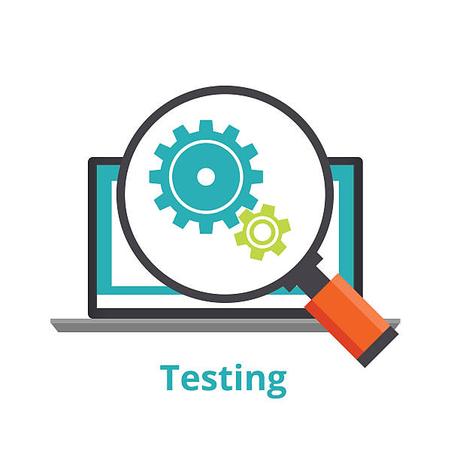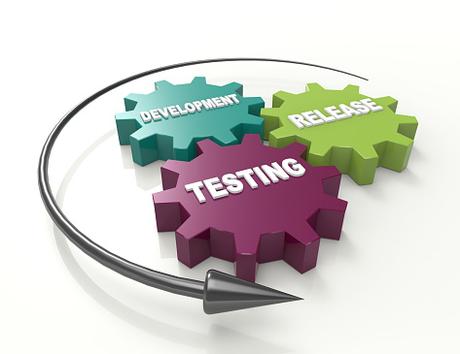Software quality is very crucial as it impacts the reputation of the brand and affects customer retention.
Even a small defect in the end product can hugely impact the business, negatively. Software testing reduces the risk of getting into such trouble and ensures that the end product is usable and reliable.
When developing software, its ultimate success depends on its testing phase. The testers make use of very strategic and calculated methods to get the best results.
They use the Software Testing Life Cycle (STLC) process to ensure the test results meet the quality standards of the software.
About Software Testing Life Cycle (STLC)
The Software Testing Life Cycle (STLC) refers to a series of steps that are performed in a fixed sequence to make sure that the end product meets all the software goals. This cycle revaluates the software product because each of its steps is carried out in a planned manner.

Every phase has its different goals and deliverables that must meet the quality standards of the product.
The STLC is a standardized and sophisticated testing procedure, where every phase has some set goals. Every cycle has an inception or the start stage and finally the closure stage.
The testing process progresses as each phase progresses. It is not possible and advisable to skip any one stage and jump to the next.
The Process of Software Testing Life Cycle (STLC)
The STLC process has well-defined phases that flow in the cycle, where each phase has some goals and outcomes. Each phase is carried out systematically.
Every organization has its STLC steps, depending on the product.
Every action has a deliverable that tells what actions need to be performed and what result is to be expected.

The STLC steps are –
- Analysis of the Requirement,
- Planning the Test,
- Developing Test scenarios,
- Setting up the Test Environment,
- Executing the Test,
- Closing the Test Cycle.
We will discuss each phase in a detailed manner.
Analysis of the Requirements
This is the first stage of STLC, where the team understands the needs as to what needs to be tested. It is essential to get the clarity of all the conditions, be they functional or non-functional.
This phase also works on the scope of testing and a decision is made on what all features require testing and what features are out of the scope of testing. The test environment details are also planned in the Requirement Analysis phase.
Planning the test
The Test Planning phase is very important in the testing process. It requires defining the test specifications to accomplish the project demands. This phase recognizes the activities and resources that would be needed to meet the objectives of testing.
It is essential to determine the metrics, methods of acquiring and tracking those metrics. The test planning phase has these activities – Preparing the test plan, selecting the testing tool, estimating the test efforts, planning of resources and figuring out the roles and responsibilities, and requirement of training.
Developing the Test Scenarios
This Phase is the step where the testing team creates the test scenarios, which will be fed to the software to see the results. This step comes after the test plan is fully ready. This phase also specifies the test information and creates the test script with the help of automation tools.
The test script is created and reviewed based on some set conditions. The Quality Assurance team makes the test scenarios pertaining to every system. This phase ensures the test coverage must be 100%.
Setting Up the Test Environment
After the above phases are carried out, the fourth phase is the Test Environment Setup Phase, where the QAs set up a testing environment where the testers test the features of the software.
They understand the whole architecture and the environment setup of hardware and software requirements. In many cases, test servers are created. This test environment is a close simulation of the real-world environment.
Here, the testers carry out different kinds of testing – automated, manual, performance, smoke testing, etc. This phase is essential to get the best test results.
Executing the test.
Once everything is fully set up in the test environment, the fifth phase is the Test Execution Phase. It comprises execution of test scripts, maintenance of test scripts, both manual and automated execution of test cases, and bugs reporting.
When the test cases are executed, the test results may bring some defects in the defect management tool or the manual logging on the excel sheet. The bugs are found by comparing the expected test results with the executed test results.
These bugs are reported to the development team and once they fix them, the retesting of the same is done. The test case execution stops only when all the test cases give the expected results.
Until then, the testing and the development team work hand in hand to solve the issues.
Closing the Test Cycle
The last stage is the Test Cycle Closure Phase, which flags the final closure of testing. It comprises checking if everything was delivered as expected.
It involves some steps like reporting of test completion, collection of all test completion matrices and results. The testing team holds a meeting to discuss and analyze all the testing scenarios and the results that came up.
They identify the strategies that they must implement in the future and learn from any mistakes they made at present. The test closure report and the test metrics have it all at the end of this phase.
Features of Software Testing Life Cycle (STLC)
Below listed are the characteristics of STLC life cycle:
- STLC plays an essential role in the Software Development Life Cycle and deals with the whole testing phase.
- STLC must commence right when SRS (Software Requirement and Specification) document is prepared.
- STLC is a phased process where each phase comes in chronological order to ensure the quality of the software.
- The STLC process reduces the Test Cycle time and gives the best results.
- STLC helps in getting hold of bugs at the initial stage because, after the development phase of SDLC, the testers prepare the Test Cases and being the process.
Benefits of Software Testing Life Cycle (STLC)
STLC in software testing helps the teams to define the requirements and goals for each part of the project.
The STLC team makes sure that all the system features work well. Incorporating the Software Testing Life Cycle (STLC) in the Software Development Life Cycle is very crucial and has the following benefits:
Better understanding
In the earlier days, the testing team came into the picture after the development work was over. Sometimes even the test cases were prepared by the development team. In the current times, the testing team gets involved in the project development right from the beginning.
It gives them complete knowledge and perspective of the system being developed. They get a better understanding of the software from a business and technical point of view, which results in better overall testing.
They design the test cases meaningfully and have a clear knowledge of the software.
Lesser project costs
Any business or industry works with budget and nothing can beat it if things start happening within the budget. Since the testing team is involved with the development team right from the beginning, it ensures that the project will be delivered on time and no overhead costs will incur due to lack of understanding.
The testing team can act proactively and uncover bugs by following a systematic testing process.
Moreover, each test phase brings some deliverables that ensure the progress of the project is on time. Following the STLC process is highly beneficial for projects to run on time and within the budget.
Well-defined Goals
Every phase of the STLC process works towards a well-defined goal and deliverable, thus helping in measuring the progress at each step. After each phase, the project reaches a new milestone.
The approach is systematic and lets bugs and defects show up much faster, thus get resolved faster.
Even the specifications made before the testing are clearer and this helps the whole team to work cohesively towards the well-defined goals.
Better User Experience
Well-tested and functional software assures a wonderful user experience. If the software is functional and usable, the user loves it.
The tester’s involvement right from the beginning of the development phase ensures that all bugs, defects, and errors are resolved and the software is functioning perfectly.
Reliability
Software testing makes the software more reliable and usable. Many industries do not pay much heed to the Testing phase, which is why they sometimes deliver unreliable software.
But, by following the STLC process, the reliability of the software enhances and it becomes capable of meeting the industry and technical standards.
Infuses Confidence
Developing and finally deploying the software is a very stressful and overwhelming process, where there are several places for things to go wrong.
But, the phased process of the Software Testing Life Cycle ensures that nothing can go wrong and whatever issues crop up at each step can be easily handled. It inspires confidence in the software application and minimizes the chance of its failure at any time.
Customer Satisfaction
A thorough testing process ensures that the product will be error-free and thus will improve customer satisfaction. When the customers see that the software is working perfectly as per the technical and business needs, they feel good and satisfied.
The whole STLC process ensures the same, that at the end the user is satisfied with what is delivered to him. A satisfied customer will always come back with more business.
STLC vs SDLC: How Do They Differ?

You might also be confused between the STLC and SDLC. SDLC (Software Development Life Cycle) is related to STLC but they are not the same.
SDLC is related to software development whereas STLC is related to Software testing. In SDLC, the designs are created based on the client requirements and create the features.
In contrast, STLC focus on conducting the software tests and ensure the software is error-free.
Both these lifecycles include the stakeholders, team of DevOps, testing team, Product owners, Business analysts and developers.
Conclusion
Software Testing Life Cycle (STLC) is thus a series of phases, where each phase works towards a goal and delivers the result. The testing team ensures that the software is thoroughly tested for any and every situation, and thus will work perfectly as per the business and technical requirements.
Different industries follow different STLC phases, but the main highlights are the above-discussed phases. Each phase must be done thoroughly by working in the coordination of the development and testing teams.
The beauty of this phased process is that bugs or defects are shown up at an early stage and thus can be resolved without much change and effort.
Without STLC, even a small bug showing up at a later stage can mess up the whole Software Development Life Cycle.
There are several application testing tools available that are smart and intuitive and give the desired outputs. They help in improving collaboration and minimizing costs and risks.
Hope this guide would have helped you find out the STLC and its benefits along with all its phases. Now, you know the difference between the STLC and SDLC as well.
Also Read:
- 16 Best Software Testing Tools to Know as a Tester
- 10 Best Load Testing Tools For Web Applications In 2021
- Top 8 Python Testing Frameworks For Test Automation In 2021

